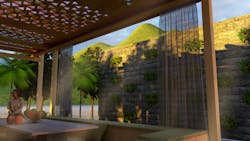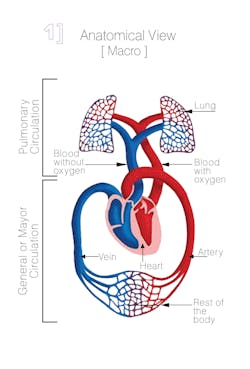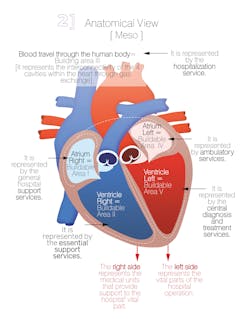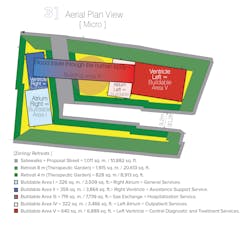MS Design, Wellness & Health Uses Biophilia to Address Infant Mortality
In 2015, Maria Isabel Segura was only in her third year of college in Costa Rica when she was diagnosed with congenital heart disease (CHD). She then traveled to Miami to meet with a surgeon who didn’t mince words when he told her that to save her life, what ended up being a 12-hour open heart surgery would need to occur sooner rather than later. It was during her recovery that she began researching how design can influence the brain’s neurotransmitters and consequently its epigenetics (changes—driven by our behaviors and environment—that affect the way your genes work).
“At that time, I saw how what I was doing was having a positive impact on me, so I started sharing that with other people with congenital heart disease.” Fast forward a few years and she took it a step further with the founding of MS Design, Wellness & Health, an interior architecture design lab that seeks to teach clients how to use its principles to heal themselves, as she did. Today, she sees her experience with CHD as one of her best assets as a designer. Currently working in large part for residential consultancy (see her services listed below), it helped her to see people as patients and not just clients.
“Sometimes, as a designer, it’s easy to see the space but it’s really difficult to understand the person and what a hospital means to a patient and family,” she said.
As you’ll see from her website, Segura’s conceptual work draws heavily from biophilia, in particular these two commercial standouts: Tropical Scape and HE+Ar.T. Tropical Scape is a freestanding structure, designed to help users recharge, relax and rejuvenate their minds, thanks to a four-panel ceiling based on the geometry, color palette and growth patterns within the four-phase Bromeliad flower bloom cycle.“The project’s bridge symbolizes the circulation through the heart and the connection of all the building components as a living system that aims for the recovery of the patients, working as a single organ,” she explained.
Design at the intersection of wellness and healing is Segura’s motto and she puts that into practice every single day, turning a traumatic experience into a meaningful life. Segura hopes that by injecting environmental psychology into her design with organic shapes and calming colors that can, for example, help patients with anxiety not produce adrenaline or lull those with insomnia, she can play a more active role in their recovery than the healthcare environments did that she experienced in her own life.
MS Design, Wellness & Health a la Carte Services:
Online Design Coaching & Consultation: starting at $200 per hour.
Design Shopper, Residential & Organization: starting at $350 for an initial meeting and three shopping hours.
Residential Healing Design Concept: starting at $500 per space.
Professional Home Organizing: starting at $300 for an initial meeting and three hours.
About the Author
Lauren Brant
Editor, i+s and BUILDINGS
Lauren Brant is an editor at both i+s and BUILDINGS. Prior to joining Endeavor Business Media, she served as deputy news editor at a daily and editor of a weekly newspaper. She is an award-winning editor and writer.




